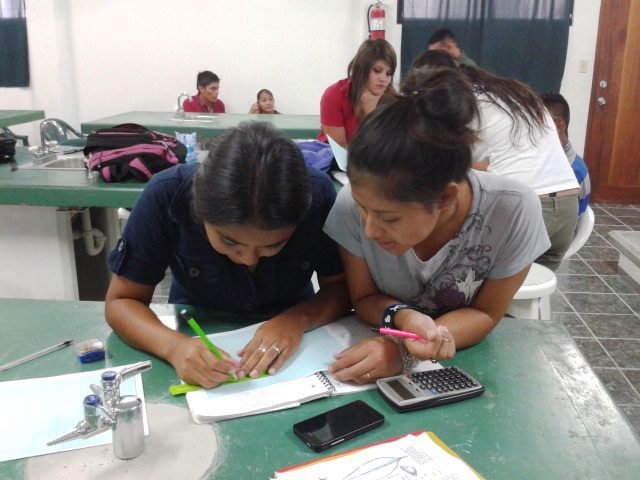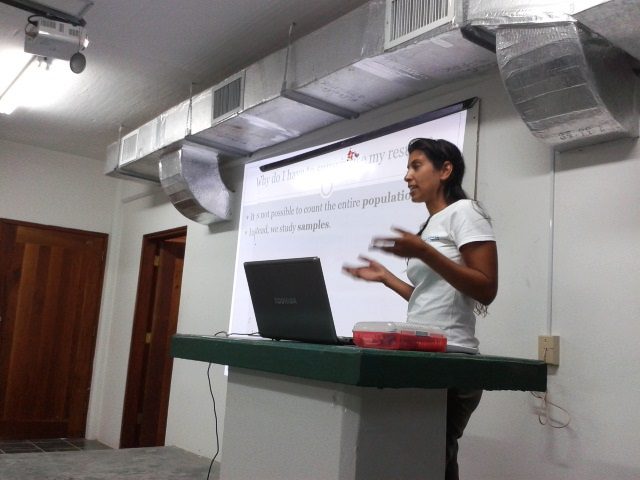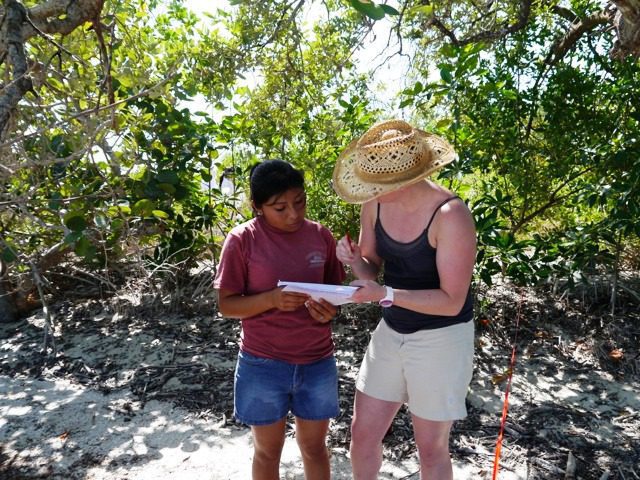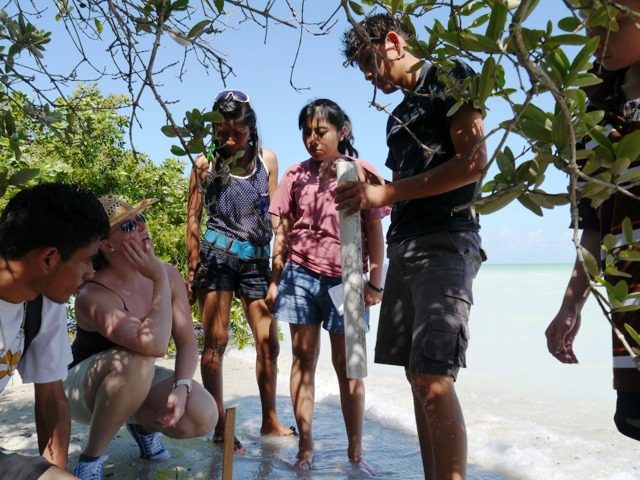by Winnie Courtene-Jones and Meira Mizrahi, Field Scientists, Belize
Throughout this academic year, Blue Ventures’ staff team has again been working closely with the natural resource management classes at the Centro Escolar Mexico Junior College (CEMJC). This enthusiastic group of students are made up of first and second year students enrolled in the Biology and Natural Resource Management Associates Degree programme, and many have an interest to go on to study Natural Resource Management at the University of Belize in the future. Our role has been to provide a series of lectures, workshops and practical fieldwork to help build capacity for scientific reporting, survey design, and data management, analysis and interpretation.

The students were enthusiastic worked hard throughout the course
Since September 2013, the programme has guided students through the ecology of coastal ecosystems, report structure and scientific writing, forming a hypothesis, methods and experimental design, data analysis, and interpreting results. All of this has been leading towards carrying out their end of year project. For this, the students divided into groups to design their own methods to investigate posed research questions on mangrove zonation, species composition and litter. Earlier in the year, they joined us in Sarteneja to carry out their field research in the mangroves.
Each group of 4-5 students was partnered with a Blue Ventures volunteer, now experienced in fieldwork due to their experiences in Bacalar Chico, and we floated between groups in the field, to make sure everyone was comfortable with what they were doing.

Meira talking to the students about research design
Armed with quadrats, transect tapes, string and ready-prepared data sheets, we all headed out into the mangroves. There was no apprehension and the students dived straight in, wading through the mud and climbing over mangrove roots to make their scientific study as rigorous and as accurate as possible. A fantastic day was had by all, and it was encouraging to see everyone’s enthusiasm for the work.
The following month a further lecture was given to reinforce concepts of basic statistics and graphical presentation of results. Each group’s project was written up to form a report that forms part of their end of year assessments.

Learning how to do practical research was an important part of the course
The last instalment for the CEMJC was for the students to present their findings to their teachers, class and us. As we headed to the CEMJC, we were excited to see what the students had prepared; having spent intermittent time with them over the year, we are all routing for their success.
First impressions are great! They have dressed to impress and have obviously taken this task seriously. We can feel the build up of anxiety in the air so decide to get started immediately.
Presenting scientific findings to your peers and seniors is always difficult and nerve wracking, however we are overall impressed with their work and performance. Studies followed appropriate scientific methods and conclusions were made methodologically and for the most part conservatively. There is still a lot of work ahead for these budding young scientists, but they are well on their way to success!

Winnie talking to the students during the practical component of the course

